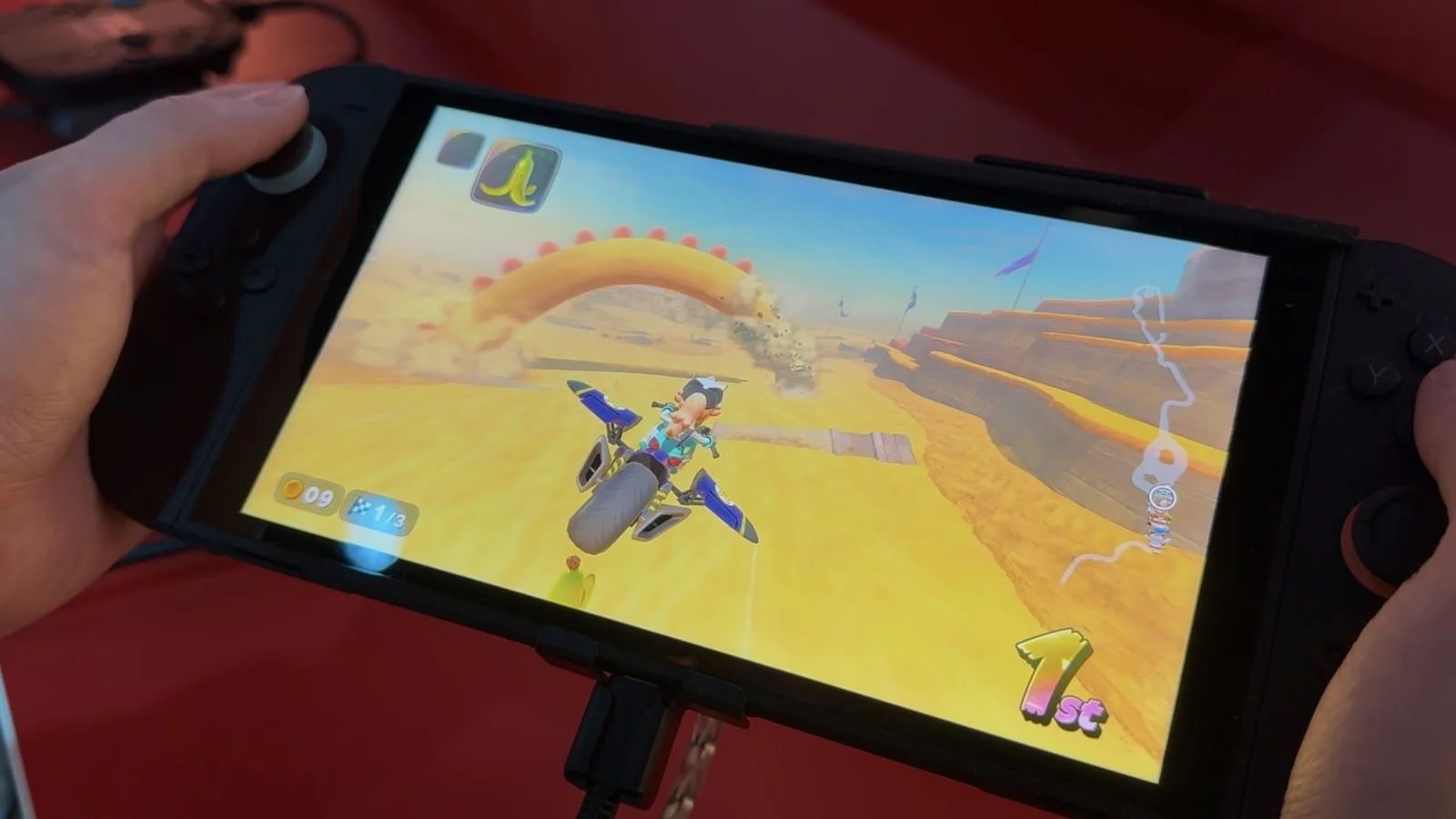Posted by - tvnengr -
-
on - Fri at 10:15 PM -
Filed in - Other -
-
19 Views - 0 Comments - 0 Likes - 0 Reviews

We've learned a lot about the Switch 2 since Nintendo announced it in back in January. We know how basic specs compare on paper to the original Switch; we know that many physical game carts won't actually have the games on them; and we know what games to expect this year. While there's still more to learn about the console before it officially launches next month, some new leaks have provided fresh insights into how the Switch 2 actually performs.
Digital Foundry reports that it can definitively confirm leaks surrounding the Switch 2's hardware, answering many of the remaining questions that Nintendo and Nvidia have left a mystery thus far. The outlet highlights the key hardware upgrades for the company's new console, and explains how there are some major performance boosts—especially in docked mode.
Digital Foundry highlights that Nintendo calls the SoC (system on a chip) in both the Switch 2 and OG Switch "custom," but notes that the original Switch's SoC was really a "vanilla" chip. The Switch 2's hardware, on the other hand, really is made solely with Nintendo's console in mind. That means it should be better optimized for the company's unique situation of needing to offer console-quality game play that can adapt to handheld mode.
The new custom Nvidia T239 has an eight-core ARM Cortext A87C CPU, compared to the four-core ARM Cortext A57 in the Switch 1. Digital Foundry reports that the original Switch reserved one CPU core for operating system features and left the other three open to developers, while the Switch 2 reserves six of its cores for developers, and uses two for OS tasks.
CPU specs are still unclear: The original Switch had a fixed CPU clock speed (the processing rate of the CPU) of 1020MHz whether it was docked or in handheld mode. The new Switch runs at 1101MHz in handheld, but 998MHz when docked. Digital Foundry isn't sure why this is the case, though it does speculate it has something to do with memory bandwidth drops that would have an impact on CPU performance. The maximum theoretical clock speed here is 1.7GHz, compared to 1.785GHz on the Switch.
GPU specs make more sense at this time. The new Ampere GPU has a typical clock speed of 1007MHz when docked, and 561MHz in handheld mode, with a maximum clock speed of 1.4GHz. The original Switch's Maxwell GPU ran at 768MHz when docked and up to 460MHz in handheld mode, with a maximum of 921MHz. An important metric to note here is TFLOPS, which measures the rate of performance for a GPU. When docked, the Switch 2's GPU is rated for 3.072 TFLOPs, but drops to 1.71 TFLOPs in handheld mode. Digital Foundry makes the point that you can't necessarily evaluate a GPU's potential from TFLOPs alone, and that it'll be up to developers to show us how well games can perform.
We already knew that the Switch 2 offers 12GB of RAM (102GBps when docked and 68GBps in handheld). Digital Foundry now says it can confirm how Nintendo is allocating that memory: The OS uses 3GB of RAM, which leaves 9GB for running games. It's a stark comparison with the Switch 1, which only shipped with 4GB of RAM, with 3.2GB of that allocated to developers. That means the Switch 2 nearly triples the amount of memory game makers can use.
GameChat is one on Nintendo's "big" new features for the Switch 2. Coming to market a mere 22 years after Xbox Live popularized online console chat, the feature offers in-game communication features like audio and video chat and screen sharing. However, it appears that innovation comes at cost to performance.
Digital Foundry says GameChat affects system resources to such a degree that Nintendo is offering developers a "Game Chat testing tool." This tool replicates the resources Game Chat takes up while running, so developers can understand how that might impact their games, without actually needing to run Game Chat itself during development.
This should be no surprise to anyone who watched Nintendo's Switch 2 demos. Game Chat looks choppy, especially when sharing your screen or making video calls. (Is that 5 fps?) I suppose it's refreshing to see Nintendo so transparent about how laggy these features are, but the fact that it looks this bad in the official advertisement doesn't bode well for Game Chat's real-world performance.
Taken purely on paper, the Switch 2 has a big performance advantage when plugged into its dock. We already knew that the Switch 2 is capable of 4K 60 fps and 1440p 120 fps output in docked mode, compared to 1080p 120 fps output in handheld. It makes sense, then, for the Switch 2 to have an active cooling fan built into the dock to maintain that higher performance. (The Switch 1 does not have a fan in its dock, even though it is able to output a higher resolution in docked mode than handheld.)
However, we'll have to see how the performance translates into real-world use. As with any piece of hardware, on-paper specs can only tell you so much. The true test is in how developers can optimize and push that hardware with their software. If devs can take advantage of the more advanced Switch 2 hardware to pull off more impressive graphics and performance, we'll naturally see that for ourselves in the gameplay. For now, it's a waiting game.
A Common Sense Platform for Common Sense People
In today's world of Social Platforms there is no reason to settle for the Big Corporate Driven platforms that talk a good game on the 1st amendment but deliver a little more that controlled speech
